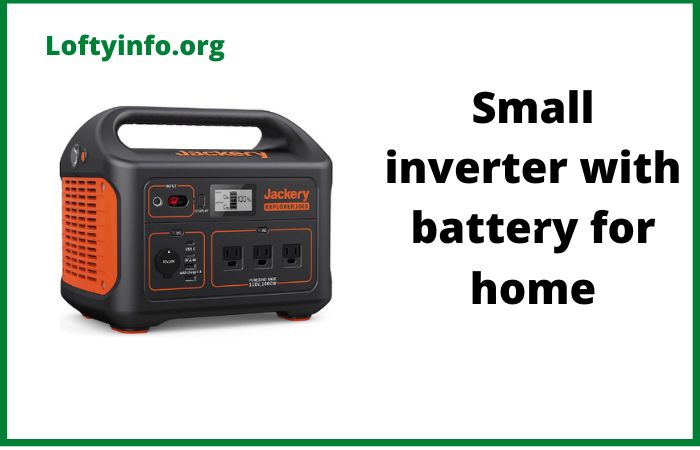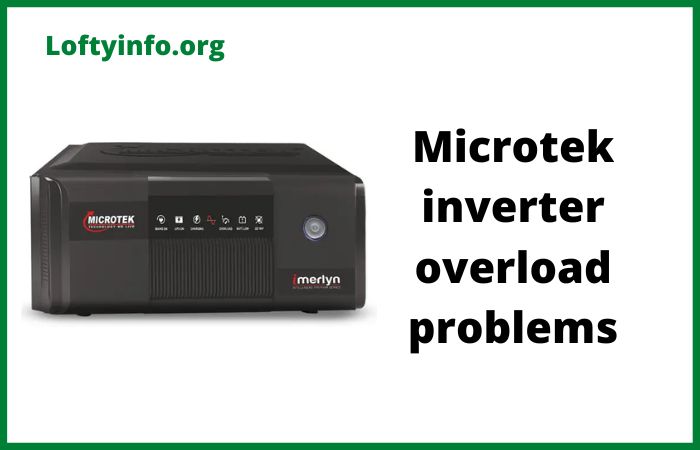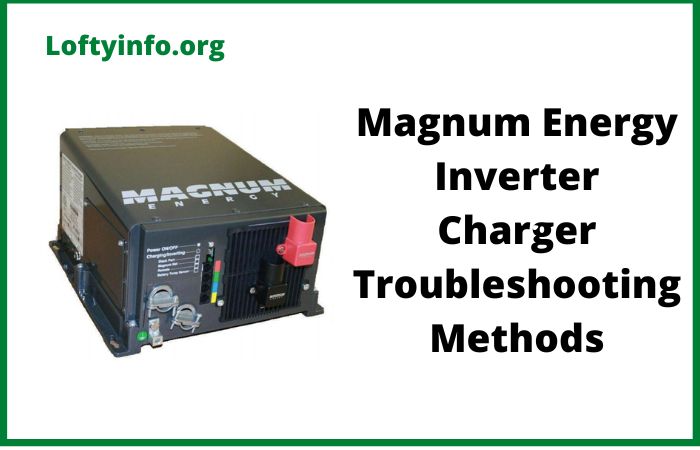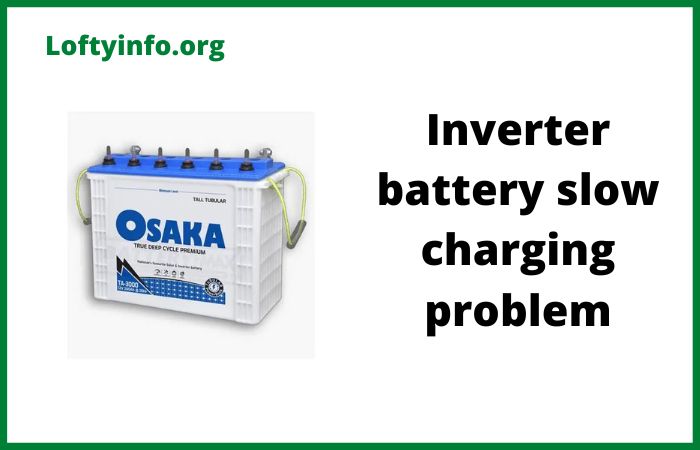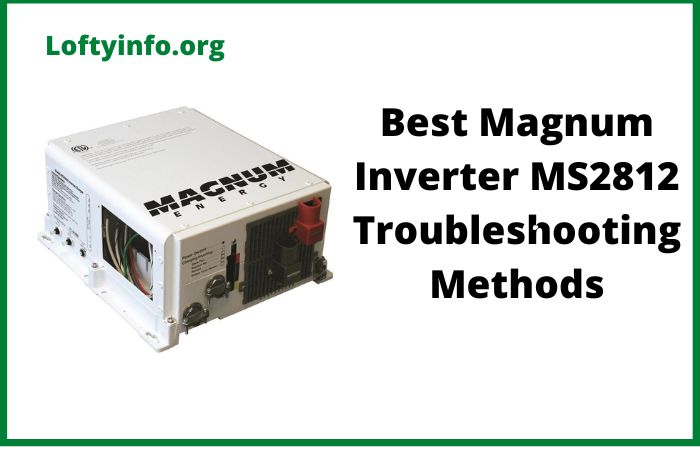Best Small Inverters With Battery For Home
In an era where power reliability remains a critical concern for households, finding the right backup solution has become more important than ever.
Whether you’re dealing with frequent outages, looking to reduce energy costs or simply wanting peace of mind during emergencies, investing in a small inverter with battery for home use offers a practical and efficient solution.
These compact power systems have evolved significantly, providing homeowners with reliable electricity without the complexity and expense of whole-house generator systems.
Unlike traditional generators that rely on fossil fuels and require regular maintenance, modern small inverter systems with integrated batteries offer clean, quiet and convenient power whenever you need it.
They’re particularly valuable for keeping essential devices running during outages, from refrigerators and medical equipment to communication devices and lighting.
Today’s market offers an impressive range of options that combine portability, reliability and sufficient power output to meet various household needs.
Solar generators represent the latest evolution in home backup power technology.
These systems integrate solar charging capability with battery storage and inverter technology, creating an all-in-one solution that’s both environmentally friendly and cost-effective over time.
Let’s explore some of the most reliable options available in the 500 to 1000-watt range, perfect for residential applications.
Best Small Inverters With Battery For Home
1) EcoFlow RIVER 2 Pro
EcoFlow has established itself as a leader in portable power solutions and the RIVER 2 Pro exemplifies their engineering excellence.
This model packs a 768Wh LiFePO4 battery that provides extended runtime for essential devices.
The AC output delivers 800W continuously with X-Boost technology enabling it to power devices up to 1000W by regulating voltage.
Solar input supports up to 220W and the unit can be fully recharged in just 70 minutes using AC power, one of the fastest charging times in its class.
The RIVER 2 Pro features a comprehensive port selection including four AC outlets, three USB-A ports, one USB-C port capable of 100W output and a 12V car outlet.
At 7.8kg, it remains portable while offering robust power delivery.
The battery management system ensures over 3000 charge cycles, providing long-term value.
2) Jackery Explorer 500
Jackery’s Explorer 500 represents a reliable mid-range option with proven performance.
The unit contains a 518Wh lithium-ion battery and delivers 500W continuous power output with a 1000W surge capability.
It accepts solar panel input up to 100W through its DC charging port, with a full solar charge taking approximately 9.5 hours with optimal sunlight.
AC charging completes in about 7.5 hours.
The Explorer 500 includes one AC outlet, three USB-A ports and one 12V car port.
Weighing 6kg, it’s among the lighter options in its class, enhancing portability for both indoor use and outdoor adventures.
The pure sine wave inverter ensures safe operation with sensitive electronics.
3) Bluetti EB55
Bluetti’s EB55 offers impressive versatility in a compact package.
This small inverter with battery for home applications features a 537Wh LiFePO4 battery designed for longevity with over 2500 charge cycles.
The inverter outputs 700W continuously and can handle surge loads up to 1400W.
Solar charging supports up to 200W input, achieving full charge in approximately 3.5 hours under ideal conditions.
AC charging takes about 4 hours. The EB55 provides multiple output options: four AC outlets, one USB-C port with 100W PD, four USB-A ports, two wireless charging pads on top, and one 12V car outlet.
At 7.5kg, it balances capacity with portability.
The integrated wireless charging feature adds convenience for compatible devices.
4) Anker 757 PowerHouse
Anker’s 757 PowerHouse brings the company’s reputation for quality electronics to the portable power market.
With a substantial 1229Wh LiFePO4 battery, this unit offers extended runtime for demanding applications.
The inverter delivers 1500W continuous output, technically exceeding our 1000W focus but worth mentioning for users needing extra capacity.
Anker also offers smaller models like the 521 PowerHouse with 256Wh capacity and 200W output for more modest needs.
The 757 accepts up to 300W solar input and fully charges via AC in just 1.5 hours using Anker’s HyperFlash technology.
It includes six AC outlets, two USB-C ports and four USB-A ports. At 19.9kg, it’s heavier but offers significantly more capacity for users willing to sacrifice some portability.
5) Goal Zero Yeti 500X
Goal Zero has built a strong reputation in outdoor and emergency power solutions, and the Yeti 500X continues this tradition.
This unit features a 505Wh lithium battery and delivers 300W continuous output with a 1200W surge capacity, ideal for starting motors in refrigerators or power tools.
It accepts up to 120W solar input through its 8mm port, with full solar charge taking approximately 5-9 hours depending on panel size and conditions.
The Yeti 500X includes two AC outlets, two USB-A ports, one USB-C port with 60W PD and one 12V car outlet.
At 5.8kg, it’s among the lighter options available.
The unit features Goal Zero’s user-friendly interface with clear battery level indication and charging status.
6) ALLPOWERS S700
The ALLPOWERS S700 offers excellent value in the portable power station market.
It contains a 606Wh LiFePO4 battery rated for over 3500 charge cycles, ensuring years of reliable service.
The inverter outputs 700W continuously with 1400W surge capability.
Solar input supports up to 300W, enabling fast recharging when paired with appropriate panels, full solar charge achieves in approximately 2.5 hours.
AC charging takes about 4 hours.
The S700 provides four AC outlets, four USB-A ports, two USB-C ports with one supporting 100W PD, two DC ports and one car outlet.
Weighing 7.7kg, it maintains good portability.
The unit includes a built-in LED light with multiple modes, adding emergency lighting functionality.
7) Pecron E600LFP
Pecron’s E600LFP delivers solid performance with thoughtful design elements.
This model incorporates a 614Wh LiFePO4 battery supporting over 3000 charge cycles.
The pure sine wave inverter outputs 600W continuously and handles 1200W surge loads. Solar charging accepts up to 200W input, achieving full charge in 3-4 hours under optimal conditions.
AC charging completes in approximately 5 hours.
The E600LFP features four AC outlets, two USB-C ports with PD support, three USB-A ports, one DC outlet and one car port.
At 7.3kg, it offers good portability.
The unit includes an informative LCD display showing real-time power consumption, remaining runtime and charging status, helping users manage their power usage effectively.
8) DELTA 2 Max by EcoFlow
For those needing capacity closer to the 1000W range, EcoFlow’s DELTA 2 Max deserves consideration.
This robust unit features a massive 2048Wh LiFePO4 battery, providing extended runtime for multiple devices or longer outages.
The AC output delivers 2000W continuously, well-equipped to handle demanding appliances.
It accepts up to 500W solar input, enabling full recharge in approximately 4-5 hours.
The fast AC charging reaches 80% capacity in just one hour.
The DELTA 2 Max includes six AC outlets, two USB-C ports with 100W output, four USB-A ports, and one car outlet.
At 23kg, it’s designed for stationary use rather than frequent transport, making it ideal as a dedicated home backup solution.
9) Fossibot F800
The Fossibot F800 rounds out our selection with competitive specifications and value pricing.
This unit contains a 768Wh LiFePO4 battery rated for over 3000 cycles.
The inverter provides 800W continuous output with X-Boost technology supporting devices up to 1200W.
Solar input handles up to 200W, with full solar charging taking approximately 4-5 hours.
AC charging completes in 5-6 hours.
The F800 includes four AC outlets, two USB-C ports (one with 100W PD), three USB-A ports and one car outlet.
Weighing 8.2kg, it remains reasonably portable.
The unit features multiple charging modes and an intelligent battery management system ensuring optimal performance and safety.
10) itel Power Tank 600
The itel Power Tank 600 has emerged as a competitive option in the portable power station market.
This unit features a 640Wh LiFePO4 battery capacity, which translates to approximately 172,800mAh at 3.7V.
The inverter delivers a continuous output of 600W with a surge capacity of 1200W, making it suitable for running multiple small appliances simultaneously.
It accepts solar input up to 200W, allowing for efficient recharging during daylight hours.
The Power Tank 600 includes multiple output options: AC outlets, USB-A ports, USB-C ports with power delivery and a 12V car outlet.
Recharge time via AC input is approximately 5-6 hours, while solar charging takes 4-5 hours under optimal conditions.
The unit weighs around 7.5kg, maintaining reasonable portability while offering substantial power capacity.
Making the Right Choice
Selecting the appropriate small inverter with battery for home use depends on several factors: your typical power needs during outages, the criticality of devices you need to run, available budget and whether portability matters for your situation.
Calculate your essential power consumption by adding up the wattage of devices you’ll run simultaneously, then choose a unit with at least 20% more capacity to ensure comfortable operation.
Consider battery chemistry carefully, LiFePO4 batteries cost more initially but offer significantly longer lifespans and better safety profiles compared to standard lithium-ion.
Solar charging capability adds tremendous value, especially during extended outages when grid power remains unavailable.
The systems discussed here represent some of the most reliable options available, each offering unique advantages for different household situations.
Investing in a quality portable power station provides not just backup electricity but genuine peace of mind knowing your home can maintain essential functions regardless of grid conditions.
With proper care and use, these systems deliver years of dependable service, making them a smart addition to any modern home’s emergency preparedness plan.
Difference between solar generator and traditional solar setup
